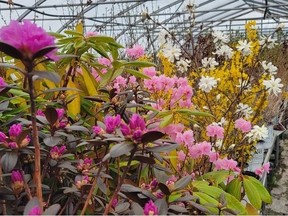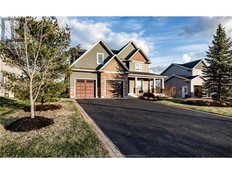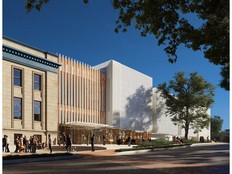Duncan Kelbaugh: An early start to spring gardening

Article content
I knew once the Kennebecasis River ice went out the earliest I had ever seen, Feb. 29, that this was going to be an early spring. Leap year, and we leapt right into it!
And what a non-winter it was, with not only thinner ice on the river, but very little snow, and less ground frost than normal. I don’t know if that will translate to earlier leaf-out or bloom times for our garden plants, but it sure gives us gardeners a chance to get ready sooner.
Spring fever had me out several days in March cutting perennial tops, raking leaves, pulling perennial weeds, and generally tidying up our garden beds. The soil was dry enough then to work the surface without getting muddy, at least until some heavy rains in late March. I love getting out early like this, before the annual weeds and newly planted flowers come along to slow things down. It seems like you cover ground twice as fast, and really feel like you’re getting on top of things. It’s a bit harder to get that feeling in June!

Evidence of a mild winter shows in particular on the evergreens, especially the broad-leaved ones like euonymus, pieris, and rhododendrons. My rhodos have nice dark green shiny leaves that show little evidence of winter stress. Often they look much lighter green, with perhaps a fair amount of brown too, which comes from desiccation of the leaves when the ground is frozen deep and cold, and the winter wind and sun dries them out. That was not the case this past winter, so you should expect a great show of flowers and new leaves from your broadleaf shrubs. The same should apply to magnolias, whose fat flower buds are formed in the fall, and must endure all that winter offers before opening in early spring before even their leaves emerge.
This week we are bringing out all the stored shrubs from the greenhouses back to the outdoor displays, as the garden centre opens on Saturday. Nothing fuels your spring fever more than a stroll in the sun-warmed greenhouse with all the early flowering shrubs already blooming, and leaf buds bursting with tender new growth. In the wide shot you see rhododendrons of darker and lighter pink, white star magnolia, and golden yellow forsythia all in full bloom. The greenhouse has simulated the climate of at least Virginia, if not the Carolinas, and induced growth that would normally happen three or four weeks later around here. Shrubs this far along will have to be protected from freezing weather for the first few weeks outdoors, but hopefully we’re over most of that!

As I begin taking appreciative, or even critical looks at my garden beds this time of year, l always appreciate the great value of the evergreens to the year-round appeal of the landscape. The deciduous shrubs are still bare, the perennials not even out of the ground yet, and annual flowers not planted. In that setting, the evergreens assume a critical role in the appearance of the beds, and remind the viewer that without them it would look pretty barren for a good part of the year. The ones that stand out in particular in my gardens are the dwarf Alberta spruce, as I planted them in good numbers in most of my beds for several reasons. Firstly, I didn’t have deer fencing when we started this landscape, and Alberta spruce are never touched by deer. Secondly, they are self-controlling, in that they grow slowly and very densely into attractive mini Christmas tree shapes. They are one shrub I very rarely touch with pruners, and can simply enjoy year after year as they gradually increase in size and visual impact.

I am partial to planting most annuals, perennials, and even shrubs in groupings of three or more, for visual appeal. Usually that group is more like five to eight plants or more, even dozens if they are smaller annuals. Those groups, in random patterns, show up better from a distance, and look more relaxed and natural than single plants, or geometric lines and shapes. That might mean that in a given bed, there might only be three kinds of plants, in groups, rather than a dozen kinds in singles and pairs all mixed together. Usually the result is more appealing to the viewer.

The other evergreen I really appreciate this time of year in particular is bluestar juniper. It is a compact, low-growing evergreen, again deer proof, with attractive foliage as blue as a blue spruce. They are perfect for the foreground of beds, as they stay under 12 inches tall. The blue provides great contrast to the various greens, and especially so next to golden foliage or yellow flowers.
I encourage you to get out there now and tidy up your beds while its still cool, and the weeds are not yet on the prowl. You can really get a head start that may keep you inspired and ahead of the game for the whole season. Happy gardening!
Duncan Kelbaugh is the owner of Brunswick Nurseries Garden Centre in Quispamsis.












Postmedia is committed to maintaining a lively but civil forum for discussion. Please keep comments relevant and respectful. Comments may take up to an hour to appear on the site. You will receive an email if there is a reply to your comment, an update to a thread you follow or if a user you follow comments. Visit our Community Guidelines for more information.